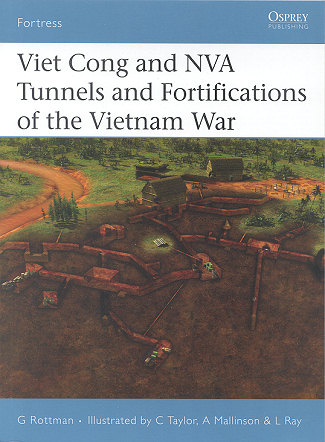 Just
as all of you are now growing up with daily news of the Iraq War, I grew up with
the daily news of the Vietnam War and the real possibility of going there
against my will (called the draft). Every day I saw and read about this conflict
which is so much like what the US is fighting as the opposition was often
indistiguishable from the normal civilian population.
Just
as all of you are now growing up with daily news of the Iraq War, I grew up with
the daily news of the Vietnam War and the real possibility of going there
against my will (called the draft). Every day I saw and read about this conflict
which is so much like what the US is fighting as the opposition was often
indistiguishable from the normal civilian population.
However, unlike the Iraq mess, the main forces in Vietnam
were organized into a proper army with all that goes with it. The Viet Cong and
the NVA rarely had the sort of material abilities of the Free World forces
against it (and by that I mean airpower, artillery and a well stocked supply
line).
This meant that the way they did battle was very different.
The Viet Cong and the NVA were masters of using available cover and rarely if
ever fought to hold a position, preferring to melt away into the brush to fight
another day. Their opposition was pretty much the opposite, fighting from built
up fortifications that were used to house all the equipment and troops brought
in to go out and find/fight the enemy.
One of the things always appreciated about the VC/NVA was
that they were able to move with a great deal of stealth and it wasn't until the
opposition found itself being fired upon from all sides that it was realized
they were in the area.
The main reason for this was the sophisticated network of
tunnels and other hidey-holes used. These could range from complexes that housed
thousands to single person shelters. These were all cleverly arranged to take
care of local vegetation and placed in such a manner that they were away from
regularly used trails and waterways.
The defenses of these complexes were equally ingenious, using
a variety of traps and snares to trap the unwary and give warning that the enemy
was nearby.
G. Rottman spent time in Vietnam during the war and his job
was to go out and find these places. This makes him well versed on the subject.
His depth of expertise shows and greatly enhances this book. It covers the whole
range of subjects from the nature of the land and war, through the building of
these defenses, the arrangements of the camps and how the tunnel systems were
built. It includes how the Free World forces tackled these defenses and systems
when they found them and what it was like to live in these places.
The illustrations are key to helping to understand just what
these places were like. Since they were designed to be temporary and mostly
built from earth, nearly all of them disappeared or collapsed after the end of
the war in 1975, so we have to rely on period images and drawings/paintings.
Overall, it is an especially intriguing book covering a
period of time that we all hoped would not be repeated. It is one that I found
difficult to put down and I'm sure you will as well.
November 2006
For more on the complete line of Osprey books,
visit www.ospreypublishing.com
or contact them at Osprey Direct, PO Box 140, Wellingborough, Northants,
NN8 2FA, UK. In the US, it is
Osprey Direct at 44-02 23rd St, Suite 219, Long Island City, NY 11101., where you can
get a catalogue of available books.
If you would like your product reviewed fairly and quickly by a
site that has over 325,000 visitors a month, please contact
me or see other details in the Note to
Contributors.
 Just
as all of you are now growing up with daily news of the Iraq War, I grew up with
the daily news of the Vietnam War and the real possibility of going there
against my will (called the draft). Every day I saw and read about this conflict
which is so much like what the US is fighting as the opposition was often
indistiguishable from the normal civilian population.
Just
as all of you are now growing up with daily news of the Iraq War, I grew up with
the daily news of the Vietnam War and the real possibility of going there
against my will (called the draft). Every day I saw and read about this conflict
which is so much like what the US is fighting as the opposition was often
indistiguishable from the normal civilian population.